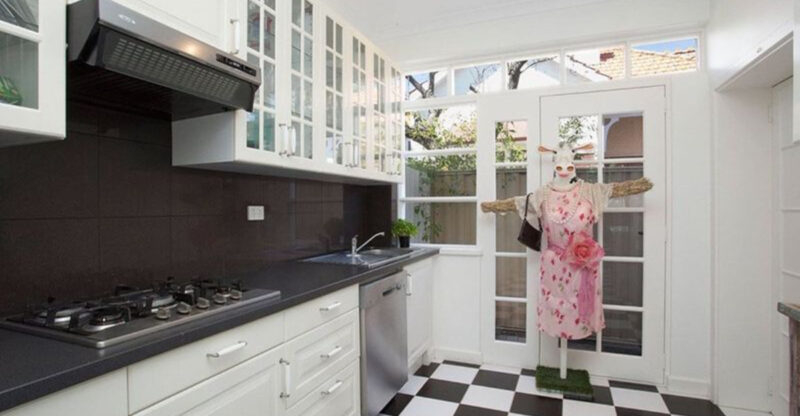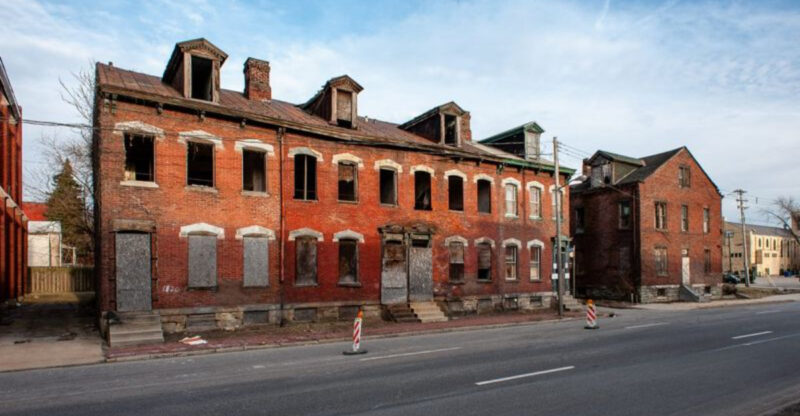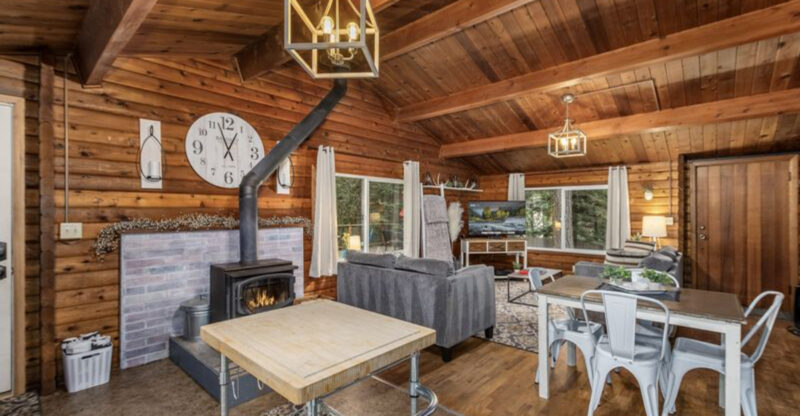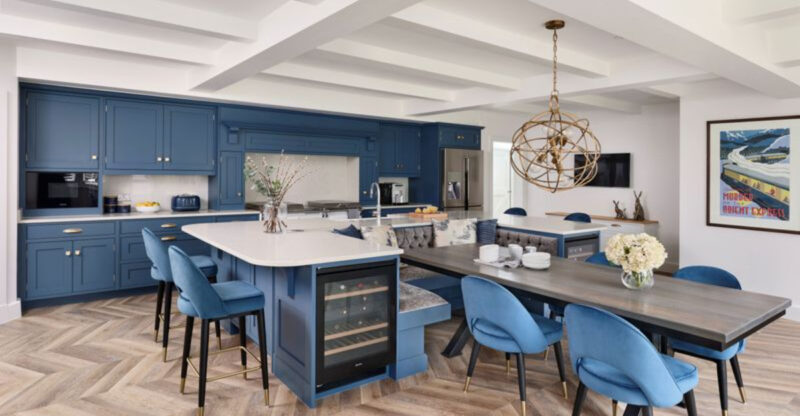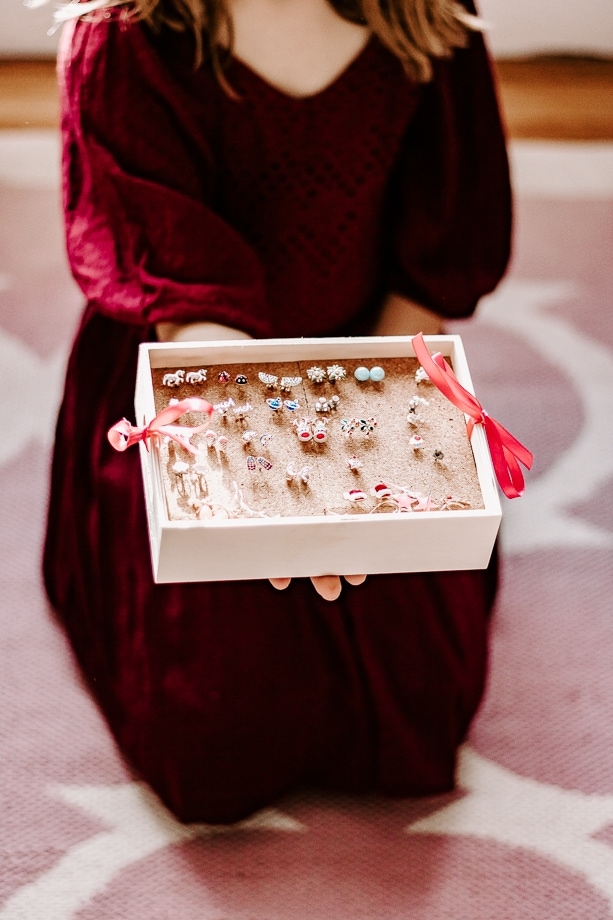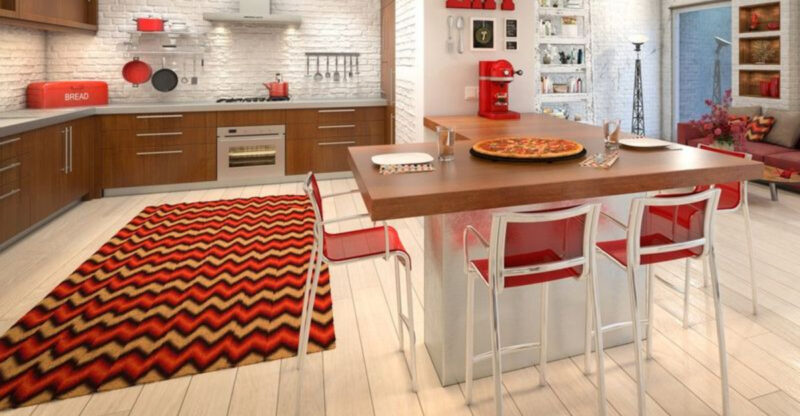DIY Grid Wall From Start to Finish

This post contains affiliate links, which means we may earn a small commission if you purchase through them — at no additional cost to you. Please see our policy page for more details.
If you are looking for an easy, inexpensive way to really jazz up a room, look no further than this tutorial for a DIY Grid Wall.
What makes this project so easy to complete? Well, it’s just a grid molding along a square wall, so your four sides are basically done for you already. Then, it’s just a matter of filling in the rest.
It’s best to draw up a template first of how you envision your grid wall to look. Do you want to go with larger squares or smaller squares? Do you want something more modern or more traditional (with decorative trim)? This will determine how many boards you need. The install process is similar to board and batten.
Office Before
Here are some photos of the office before. Not bad – but really boring.
WHAT YOU’LL NEED
- Boards – We used these primed 1×4 pine boards
- Construction Adhesive
- Ladder
- Tape Measure
- Level and Square Tool
- Painter’s Caulk
- Caulking Gun
- Brad Nailer
- Miter Saw
- Sandpaper
- Paint/Paint Brush ( We painted our wall Hale Navy by Benjamin Moore)
Step by Step – DIY Grid Wall

How to Install a Grid Accent Wall from Start to Finish
Total time: 2 days
-
Measure & Draw Grid Wall Template
First, determine how you want this to look. We measured the wall across and then up and down. We decided to work with the existing baseboard we had (if you don’t have one, you will need to install one—see step 3). Once we had our template, we could determine the number of boards we needed to complete the project.
-
Cut Top & Vertical Boards to Size

Using our template as a reference, we cut the TOP and VERTICAL boards to size with our miter saw. We waited to cut the inner horizontal boards until we had the vertical boards up in place. Our baseboards are thinner, but we wanted to use thicker boards for this project. So, we cut one end of each vertical board to a 45-degree angle (as shown in pic) so it would lay over the thinner part of the baseboard and blend in. All the vertical boards were the same size, making cutting them all at once easy.
-
Install Top & Bottom Boards First

Install your Top Board first. This top board is like crown molding, but you don’t have to worry about making mitered cuts since it’s just one accent wall. Apply construction adhesive to the back of the board, then secure it to the wall, ensuring it is lined up straight with the ceiling. Then, follow up with brad nails. If you don’t have an existing baseboard, install it next. It should be the same measurement as your top board.
-
Install Vertical Boards

We will install the vertical boards to fit in between the top and bottom boards. Starting in the corner and working our way to the other side of the wall. Apply construction adhesive to each board, and ensure its level before the adhesive sets. Then, follow up with brad nails. Repeat this process for every vertical board at the spacing you determined in step 1. You can also make a spacer board to make this process easier.
-
Install Horizontal Boards

Now we are just filling in! We measured our wall in between, then drew a mark where each horizontal board would go. We measured EACH space before cutting to ensure we had accurately sized horizontal boards. It’s the same install process as before—apply a little layer of construction adhesive, ensure the board is level and straight, then follow up with brad nails. Don’t worry about gaps and nail holes—we will fill all these in soon.
-
Caulk Gaps & Nail Holes

Apply painter’s caulk (paintable) along the sides of the moldings to fill in any gaps. Our walls are not straight, so we had some significant gaps. This process took a while but will give you professional results, so take your time here. You can also fill in the nail holes. I use a caulking gun and my finger to spread it. Nothing fancy! Allow the caulk to dry, and then fill in again as needed. Sometimes, we caulk dries, it shrinks, and you notice additional gaps that were not there before.
-
Sand Caulk

Use light sandpaper to sand off the rough edges of the caulk. This is a messy job, but it’s worth it!
-
Paint
Now we are ready to paint! I used my small Wooster brush to paint the insides of the molding and then followed up with a paint roller for everything else.
Additional Install Photos
Here are some additional photos you can reference.



Final Result!
And that’s it, my friend! You now have this beautiful accent wall. It adds so much character to a room and only takes a couple of days to complete.






We spent about $100 on wood and achieved this custom millwork look. I hope you guys give this a try with one of your walls.
Shop this Room
Click on these links or photos for sources.
- Rug
- Paint – Hale Navy by BM
- Light Fixture
- Leather Loveseat
- Round Table
- Woven Wall Art
- Faux Fiddle Leaf Fig Tree
- Two Tier Record Cabinet in Walnut
- Leather Chairs
- White Boucle Pillow
- Sheepskin Throw
- Record Player
- Marshall Speaker
- White Vase – Afloral
- Flameless Taper Candles
- Billy Button Florals
- Black Side Table/Coffee Table – Article






